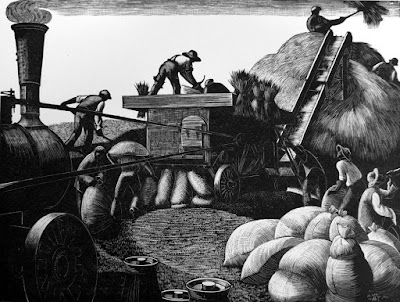It is, of course, absurd to attempt to encapsulate any whole year in a single word, but nonetheless, it clearly appeals greatly to the human urge to categorize, simplify, and identify patterns. The Germans did it first, in 1971, and there have been English “words of the year” since about 1998 (as far as I can see.) There isn’t just one, because of course there is no one official language organization for English. So here are some Words of the Year 2016 from several sources.
post-truth - relating to or denoting circumstances in which objective facts are less influential in shaping public opinion than appeals to emotion and personal belief. This word was selected by Oxford Dictionaries. The word was first seen in print around 1992, but has been gathering steam in the past decade, and the pressure cooker exploded in 2016. (Note truthiness, which was the American Dialect Society’s Word of the Year in 2005.)
surreal - marked by the intense irrational reality of a dream. This word was selected by Merriam-Webster, based on spikes in look-ups of the word on-line over the course of the year. Apparently people look up the word surreal every time there’s a terrorist attack or political upheaval of some kind. As Merriam-Webster explain, “Surreal is looked up spontaneously in moments of both tragedy and surprise.” The word actually dates to the 1930s to refer to the artistic movement, and as an art-historian-type, the 2016 sense strikes me as not quite an accurate usage - at any rate, I don’t think of terrorism as being “surreal”… but I guess if enough people do, then the meaning simply shifts.
xenophobia - fear or hatred of foreigners, people from different cultures, or strangers. This word was selected by Dictionary.com, again based on spikes in on-line word searches. The UK vote to leave the European Union and the US presidential election especially drove this, although the refugee crisis has also been significant in the new “popularity” of the word. As Dictionary.com point out, “while our lookup data can tell us what Dictionary.com users are interested in, it doesn’t tell us the reason for the interest… What we do know is that… xenophobia was a recurring subject of discourse in 2016.”
singular “they” - This word was selected as the 2015 Word of the Year by the American Dialect Society. They have not yet chosen their word for 2016 (but are now accepting nominations, if you want to send them some suggestions.) Read my previous post on the use of they as a third-person singular gender-neutral pronoun; it’s a usage that’s been around since at least Chaucer. But what’s new is that they is now also being seen to include non-gender-binary usage. It can mean he, she, or neither/something else. It can mean that gender isn’t being specified in the sentence, or at can be specifying a gender that is neither he nor she.
I’ll be curious to see what the American Dialect Society select for 2016, and whether it continues in the depressing vein begun by the others. Words have incredible power. They can shine a powerful light on the truths of our society and culture, and they have the power to hurt us and to define us. But they also have the power to uplift us, and we don’t have to let them confine us. Let’s make 2017 a year in which we make sure that the words that describe us are more inspiring.
Best wishes to all for a new year of unfaltering hope and many joys.
[Picture: All the Year Round, color wood block print by Kent Ambler (Image from kentambler.net).]













































